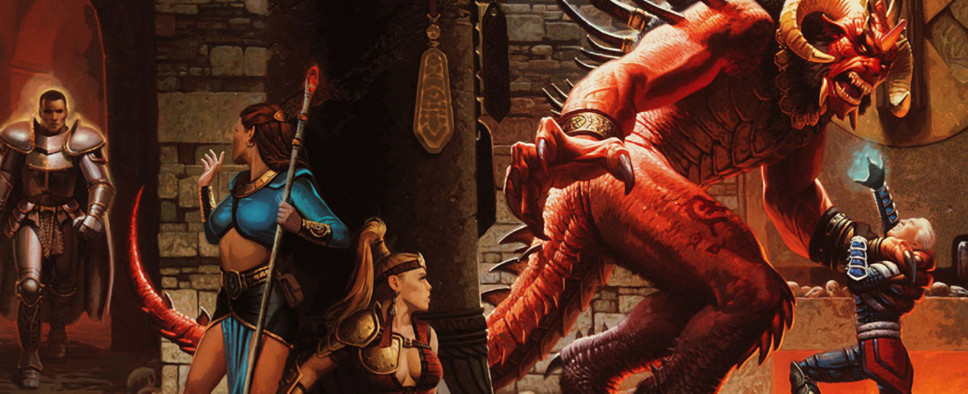Diablo II Retrospective - Page 3
-
Category: EditorialsHits: 12118

Article Index
Beyond even that, it’s also quite fun to examine Diablo II within the context of other Blizzard titles. Maybe it’s just me, but I find it endlessly amusing how the game’s Druid and Paladin skills, for example, have so very clearly influenced World of Warcraft’s class design.
In fact, if you were to look at the projects developed by the members of the Blizzard North team after their take on Diablo III was scrapped and the studio got absorbed into Blizzard Entertainment, you’d see that they had a hand in many a notable project.
After leaving Blizzard North, Bill Roper, David Brevik, Erich Schaefer and Max Schaefer founded Flagship Studios alongside some other Blizzard North people and created Hellgate: London, a cult-classic first/third-person action-RPG that was ahead of its time and can be seen as a precursor to the massive these days Destiny-style looter-shooter games.
Following that, the Schaefer brothers founded Runic Games, the studio behind the Torchlight series, the third entry in which was recently released by Echtra Games. That one was founded by Max Schaefer, while Erich, together with Runic’s co-founder Travis Baldree, went on to work on the Rebel Galaxy series as Double Damage Games.
In the meantime, David Brevik worked with Turbine to create Dungeons & Dragons Online, then became a one-man team in Graybeard Games, and is now running Skystone Games, an indie-facing publishing house. And Bill Roper joined Cryptic Studios to work on Champions Online and Star Trek Online, and then followed that up as the VP/GM of Disney Interactive Studios.
This list can honestly go way deeper and include numerous other team members, studios, and projects. But even the above few paragraphs should be enough to drive the point across - even though they didn’t create a lot of games, Blizzard North is a studio with a vast and lasting legacy.
And this brings us to Diablo III. In its early days, the game was notorious for unnecessary online connectivity issues, simplified systems, and the real money auction house. And while it’s only natural to blame the game’s less than ideal launch on the absence of those Blizzard North veterans, it’s not like the game was developed by unpaid interns. It was helmed by Jay Wilson who you may know as the lead designer on Relic’s Dawn of War series, while the game’s story was shaped by none other than Leonard Boyarsky of Interplay and Troika fame.
So even though its initial launch left a lot to be desired, most of the issues mentioned above have been fixed by now, and Diablo III remains a popular choice for action-RPG enthusiasts to this day.
Other than Diablo III, if you’re looking to play something in the vein of the second Diablo, you have plenty of options now, with two other major players being Grim Dawn and Path of Exile.
They all offer a unique take on the formula and attempt to fix some of Diablo II’s perceived issues. And while for the most part, it’s an admirable undertaking, occasionally those attempts lead to disastrous results, like how Path of Exile’s solution to Diablo II’s over-reliance on potions led to these rechargeable flasks that somehow ended up in a position where you’re encouraged to mindlessly press 1 through 5 on your keyboard every 5 seconds.
At the same time, those three titles do a pretty good job of improving Diablo II’s rather monotonous approach to difficulty levels. There, you have to essentially beat the game’s campaign three times to get to the end. And if you want to then try a different character, you’ll need to repeat this journey from the very beginning.

